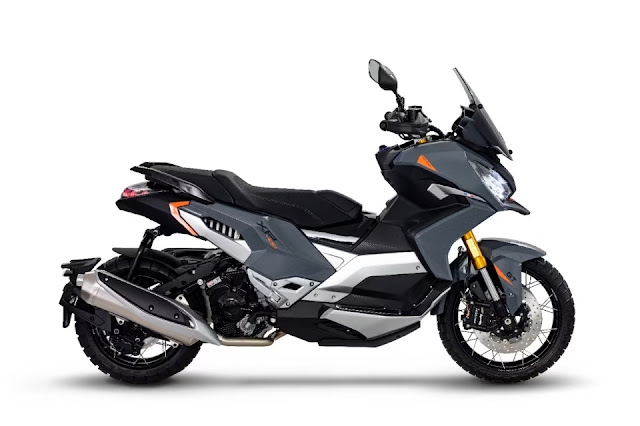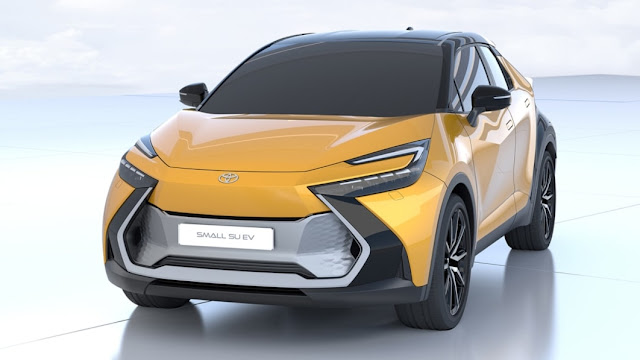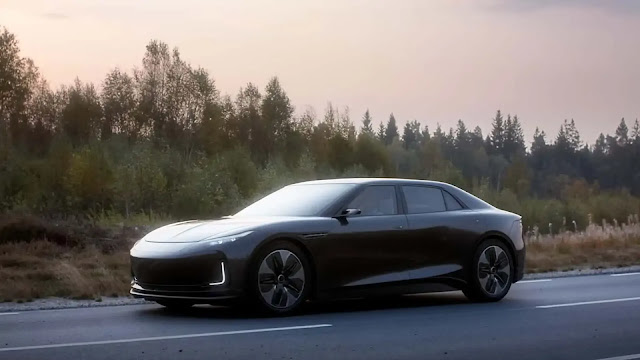"Peugeot XP400: Embrace the French Crossover Experience!"
Peugeot Motorcycle is celebrating its 125th anniversary in 2023 and returns with several new offerings. Throughout its history, the brand has produced various models, including motorcycles and scooters, renowned for their sales figures and iconic status. However, in recent years, scooters have become the norm, with notable mentions like the Metropolis and the more recent Pulsion 125. It is from this lineage that Peugeot Motorcycle continues its work.
This time, the French manufacturer presents a standout model designed for versatile usage and equipped with premium features. Introducing the XP400, an adventure scooter that sets itself apart with specific solutions that combine style and functionality, all proudly Made in France.
I had the opportunity to test-ride the XP400 and the riding experience proved to be excellent. But let's delve into the features.
Adventure-inspired Design
The XP400 boasts a distinctive crossover design, reminiscent of Honda's X-ADV, with one noticeable difference—its substantial length of 2,190 mm. The XP400 has been designed to feature a horizontal structure rather than an upright one, aligning it more with the riding style of city scooters.
The design elements draw inspiration from Peugeot automobiles, such as the dual headlights upfront resembling canine teeth, extending to the "scratched" rear light cluster. The streamlined fairings exude a sense of sportiness, and overall, the scooter exhibits a feeling of high-quality craftsmanship, accentuated by premium materials and meticulous assembly, as sought after by the French.
Two trim levels are available: Allure and GT. The main difference lies in the wheels, with the former equipped with alloy wheels and the latter with spoked wheels. Notably, the spoked wheels are lighter than their alloy counterparts. Additionally, the GT model features a tinted windshield, KYB fork, and distinct color options.
Technical Specifications
The new XP400 is powered by a single-cylinder 400 cc Power Motion engine, capable of delivering 36.7 horsepower at 8,150 rpm and 38.1 Nm of torque at 5,400 rpm. It is paired with a continuously variable transmission (CVT). However, the scooter's defining characteristic lies in its chassis. At the rear, it utilizes a unique triangular structure with a connecting rod between the tail and the furthest point of the swingarm. This system ensures robustness and rigidity at the rear, allowing for the placement of a rear mono-shock between the tail and the initial part of the swingarm.
This design concept primarily aims to tackle rough terrains without exerting stress on the frame. Interestingly, it also proves beneficial for stability during road travel. The frame itself is constructed using a mixed tubular lattice, incorporating both round and rectangular tubes, further enhancing torsional rigidity and lateral load-bearing capacity.
The front suspension features 41 mm inverted forks with 140 mm of travel. Peugeot's braking system utilizes dual 295 mm discs at the front and a 240 mm disc at the rear, equipped with dual-channel ABS. The scooter rides on 17" wheels at the front and 15" wheels at the rear, fitted with Pirelli Scorpion SRT tires.
A True Scooter
The XP400 also prioritizes practicality, despite its technical prowess. After all, it is still a scooter. One notable feature is the front dashboard equipped with a 5" TFT screen reminiscent of those used in automobiles. Standard features include a smart key for keyless ignition and a USB port. In terms of storage space, the XP400 offers a dual under-seat compartment that can accommodate a full-face helmet and small bags. However, it lacks storage compartments on the leg shield, which would have been useful for storing items like a charging smartphone.
Test Ride Experience
Once on board, the seating position feels comfortable. The triangulated structure necessitates an upright posture with arms high and wide on the handlebars and legs positioned at the right distance from the seat. The central tunnel may feel slightly cumbersome, but it can be gripped with the legs to achieve a more sporty riding style.
During initial acceleration, the scooter's weight of 231 kg becomes noticeable, making maneuvers a bit challenging. However, once the throttle is opened, the weight is soon forgotten due to the scooter's responsive handling. In the city, it may not possess the typical agility of scooters due to its size. Nevertheless, the wide steering angle enables easy navigation through traffic, and the rest of the chassis contributes to a comfortable ride even during long journeys. The suspension system effectively absorbs bumps and uneven roads, while the braking system offers excellent modulation at low speeds and becomes assertively responsive when needed. The ABS is finely tuned and only engages when necessary.
On and Off-road Capabilities
Moving onto faster roads, one might feel slightly disappointed by the engine's performance. Twisting the throttle does not yield the expected response from a 400 cc engine, especially considering the specifications provided. This is not to say that the scooter lacks power, but rather, there is a constant feeling of long transmission ratios, struggling to surpass 6,000 rpm. It delivers slightly better performance once speeds exceed 90 km/h, but nothing exceptional.
Nevertheless, the riding experience remains satisfying on faster roads, primarily thanks to the chassis. The suspension system handles cornering well, and the typical rear-end oscillation often found in scooters is absent. While the change of direction may not be lightning-fast, a decisive approach allows for improved maneuverability. The scooter's grip enables near-maximum lean angles without fear. Overall, the 17" front wheel contributes to the motorcycle-like feel and provides excellent steering response.
In terms of comfort, it is maintained for extended periods, and the windscreen offers sufficient protection, although taller riders may find their heads exposed.
As the name "Crossover" suggests, I also ventured onto some easy off-road terrain to test the XP400's capabilities. The tires are well-suited for this purpose, and overall, it provides an enjoyable experience. Removing the traction control allows for faster travel, and the chassis, combined with the suspension, is always ready to facilitate control. It is not designed for true off-roading, but with the XP400, you can certainly reach those inaccessible beaches that are out of reach for a regular scooter.
Price and Final Thoughts
The Peugeot XP400 is already available for sale at dealers, with prices starting at €7,999 for the Allure version and €8,499 for the GT version. Both models come in two color options: Aurora Satin Green and Sideral Mat Black for Allure, and Shark Grey and Snow White for GT. Available accessories include a metal cover bar for the leg shield and footboard, fog lights, and a top case to increase storage capacity.
The XP400 positions itself as one of the top contenders in its category, thanks to its well-executed features and quality chassis. It proves practical for various riding scenarios, and Peugeot's experiment with the "Crossover" concept can be considered a success. As for drawbacks, the engine's performance may benefit from transmission adjustments, and the price, although justified by its features, is slightly higher than the competition.
In conclusion, the Peugeot XP400 offers a versatile and premium scooter experience, blending the pleasure of motorcycle-like riding with the practicality of a scooter.






Comments